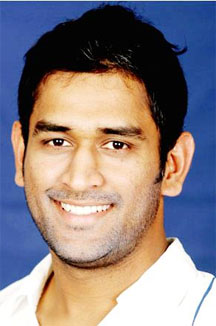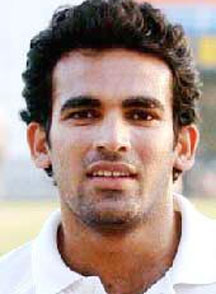NEW DELHI, (Reuters) – The favourites’ tag will be the albatross around India’s neck when Mahendra Singh Dhoni and his team mates begin their quest for World Cup glory.
A billion dreams will rest on their shoulders as they seek to become the second Indian team, after the 1983 ‘Kapil’s Devils’, to win the top prize in one-day cricket.
With arguably the best coach around in South African Gary Kirsten, led by the unflappable and charismatic Dhoni and boasting some of the best batsmen in the game, India have never headed into a World Cup with more swagger.

They have home advantage as well, playing five of their six Group B matches in India while the other is in Bangladesh where the track will be no less docile.
It all makes a perfect recipe for success but the air will be heavy with expectation and the players know how easily things can go wrong.
“The pressure will be definitely more on the Indian side (than any other team),” Mohinder Amarnath, a key member of India’s 1983 World Cup-winning squad, told Reuters.
“If you are doing well, it’s great. But if you are not doing well, you know how emotionally the Indians behave.”
Mayhem broke out at Eden Gardens in 1996 when Sri Lanka derailed India’s victory chase and a trouble-marred semi-final was awarded to the eventual champions.
After India’s early loss to Australia in the 2003 World Cup, angry mobs stoned Rahul Dravid’s car and tarred the walls of Mohammad Kaif’s Allahabad residence.
It was even worse after India’s early exit in 2007 when irate fans conducted mock funerals of players and burned effigies, while security was beefed up at the cricketers’ homes.
COOL FINISHER

On paper, this year’s team seem to have no weak spots.
Few sides can match the batting order where Sachin Tendulkar, statistically the greatest cricketer ever, opens the innings with arguably the most devastating batsman in contemporary cricket, Virender Sehwag.
The self-effacing Gautam Gambhir has evolved into a cool finisher and the top order is also likely to contain a transformed Virat Kohli, India’s most prolific batsman in the one-day format last year.
Even if rival bowlers manage to negotiate through the top, they will have their hands full against a swashbuckling middle order featuring Yuvraj Singh, Dhoni, Suresh Raina and the exciting Yusuf Pathan, whose six-hitting prowess makes him a lethal batsman.
The tail can sting as well.
Harbhajan Singh has proved he is no dud with the bat with back-to-back test centuries against New Zealand late last year, while Piyush Chawla or Zaheer Khan can swing the bat as well.
In comparison, India’s bowling resources look limited.
A lot depends on Zaheer in the pace department, for the left-arm seamer is equally effective up front and at the death.
The slow department looks better with Harbhajan as the frontline spinner, while off-spinner Ravichandran Ashwin and Chawla would fancy their chances at some stage.
Dhoni would have the additional option of tossing the ball to Tendulkar, Sehwag, Yuvraj, Raina and Pathan — all part-time spinners with proven partnership-breaking capabilities.
For such a team, the first concern is to deal with the pressure of expectation and make the most of home advantage, something former Pakistan captain Imran Khan does not think will be easy.
“India is easily the favourite team, going by their form and depth both in bowling and batting,” Imran said during a recent visit to India.
“I know people in India are dying to (see their team) win but there is a word of caution. It happened with West Indies and Australia — best teams often come under pressure and India will have to cope with that.”




